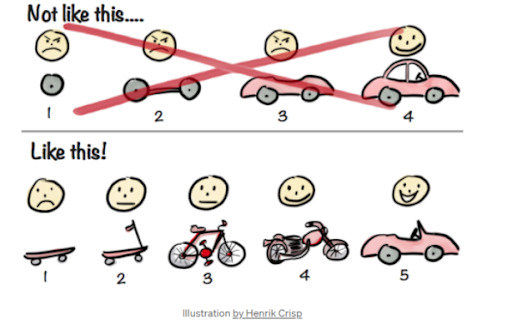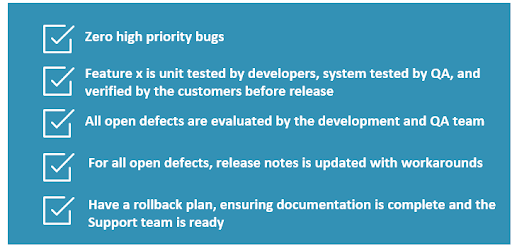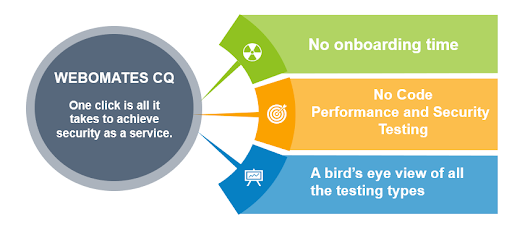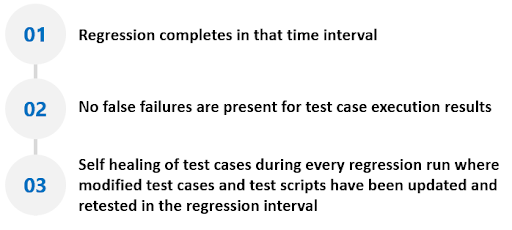The Need for Speed: Ensuring Agility with Incremental Release
In a quest to deliver features faster, achieve higher flexibility, better satisfy customer requirements and overhaul competition, organizations are breaking through the barriers of traditional software development processes like Waterfall model, and instead taking the Agile DevOps path which is both iterative and incremental. Thus, there is a huge emphasis on shipping software faster.
This transformational journey involves removal of silos between the development, testing and operations teams, and applying shift left principles. Does this mean that we can achieve Zero Production defects? Though a fairytale dream of every organization, the Lean Software Development: An Agile Toolkit quotes:
“One of the fastest ways to kill motivation is what is called in the US Army a zero defects mentality. A zero defects mentality is an atmosphere that tolerates absolutely no mistakes; perfection is required down to the smallest detail. The army considers a zero defects mentality to be a serious leadership problem, because it kills the initiative necessary for success on a battlefield” — Mary & Tom Poppendieck
Thus, instead of “zero defects”, the agile organizations are all about continuous planning, continuous testing, continuous integration with ‘continuous’ being the focal area.
Integrating Software Testing in your Incremental Release
The incremental build model is a method of software development where the product is designed, implemented and tested incrementally (a little more is added each time) to enhance the product with improved functionalities. It addresses the time-to-delivery of software products.

But, how do you know if your incremental build is ready?
Delivering software incrementally necessitates the Development and QA teams to work collaboratively to deliver a build. Though the nuances of day-to-day operations may vary from organization to organization, the teams adhere to the same core tenets to ensure incremental release — Continuous Integration, Continuous Delivery, and Continuous Deployment. The objective is to get feedback to the developers earlier & faster to help isolate issues enabling reliable and frequent delivery of code changes.
How we Do It @ Webomates CQ
Webomates CQ becomes an integral part of the product development process right from its initial development to its final release. To ensure a successful ship of the minimally viable feature, Webomates CQ conforms to an Incremental Build Release Criteria by providing functional testing with CI/CD, Modular and Full. Webomates believes that the Build Release Criteria should be SMART — Specific, Measurable, Attainable, Relevant, Trackable, to know if your build is ready. It ensures every build satisfies the below Criteria:

TestOps — The Webomates advantage
With its patented tools — Webomates CQ along with AI Defect Predictor tool, Webomates ensures that for a build with release notes, all committed test cases on all browser/smartphone/tablet will be executed in the committed time. This remains true regardless of software builds that modify features, defect fixes that modify test cases/scripts, and automation timeout errors. Webomates is fully configurable to the needs of the application and the Development Teams exhibiting agility in scaling up its testing services based on the changing requirements.
- Ability to Speedily Test build in Dev, Pre-Prod & Prod:
As per the scope of the build, Webomates has the agility to perform verification using CI/CD, Overnight or Full regression. It shortens the regression cycle from weeks to hours.
- CI/CD — 15 mins to 1 hour
- Overnight with Exploratory — 8 hours
- Full with Exploratory — 24 hours
- Execute Smoke Testing, Overnight and Full Regression testing
With an aim to detect major problems early in the cycle, Webomates conducts Smoke testing to expose any integration issues. Webomates helps you to scale up by getting the build checks done via various regression services like mini/Smoke test suites in Developer environments, Overnight modular test suites at lower environments like integration and FULL in staging/Production environments as per requirements.
- Implement regression testing with Shift-Left approach
With the power combination of Webomates regression testing with Shift-left approach, defects are quickly identified and fixed in the staging environment itself. You start with UI testing and API testing but with Smoke suites targeting the area that the developer is working on. As the features develop, then move on to module, integration and regression testing. If the module fails, there is no point for an integration test. The developers need to go back to the module and fix it before moving on. You do not wait till the end of the lifecycle to test the entire product.
- Up-to-date Test Package
As the full regressions and modular tests include healing of the test cases and test scripts for modified features, Webomates ensures that the Test Package is updated with the new behavior of the software release.
- Real-time results and analysis
To address the thousands of hours lost by QA professionals, Webomates created its patented AI Defect Predictor tool and shared true Pass and true Fail reports with the development team along with an in-depth analysis of automation failures. This AI Defect Predictor is provided to the development and QA teams that use CI/CD service to help them reduce their triage time.
For 300 test cases with a failure rate of 35% (105 failed test cases), it usually takes 12 hours to triage the results and identify the false positives. Using the Defect Predictor, the time taken drastically reduces to 2–3 hours.
Business Impact:

Conclusion:
For every incremental build, Webomates CQ can create, execute, maintain, analyze test cases and generate defects for browsers, mobile, Windows and API applications. Exact state of the system in terms of bugs is known after every check in.
For each build, Webomates ensures that the following guarantees are met in a fixed interval of time:

With such stringent code quality checks, the defects are detected at an early stage hence are easier to fix, ultimately resulting in improved code quality and timely delivery of the product.
Read our articles on Shift Left Testing in Agile and Skip Security Testing at your own risk to understand how Webomates can helpWith the power combination of Webomates regression testing with you in building a good product where UI, API, Load, and Security are not left out to be tested as a different component at the end. If you are interested in learning more about Webomates’ CQ service please click here and schedule a demo, or reach out to us at info@webomates.com



No comments:
Post a Comment